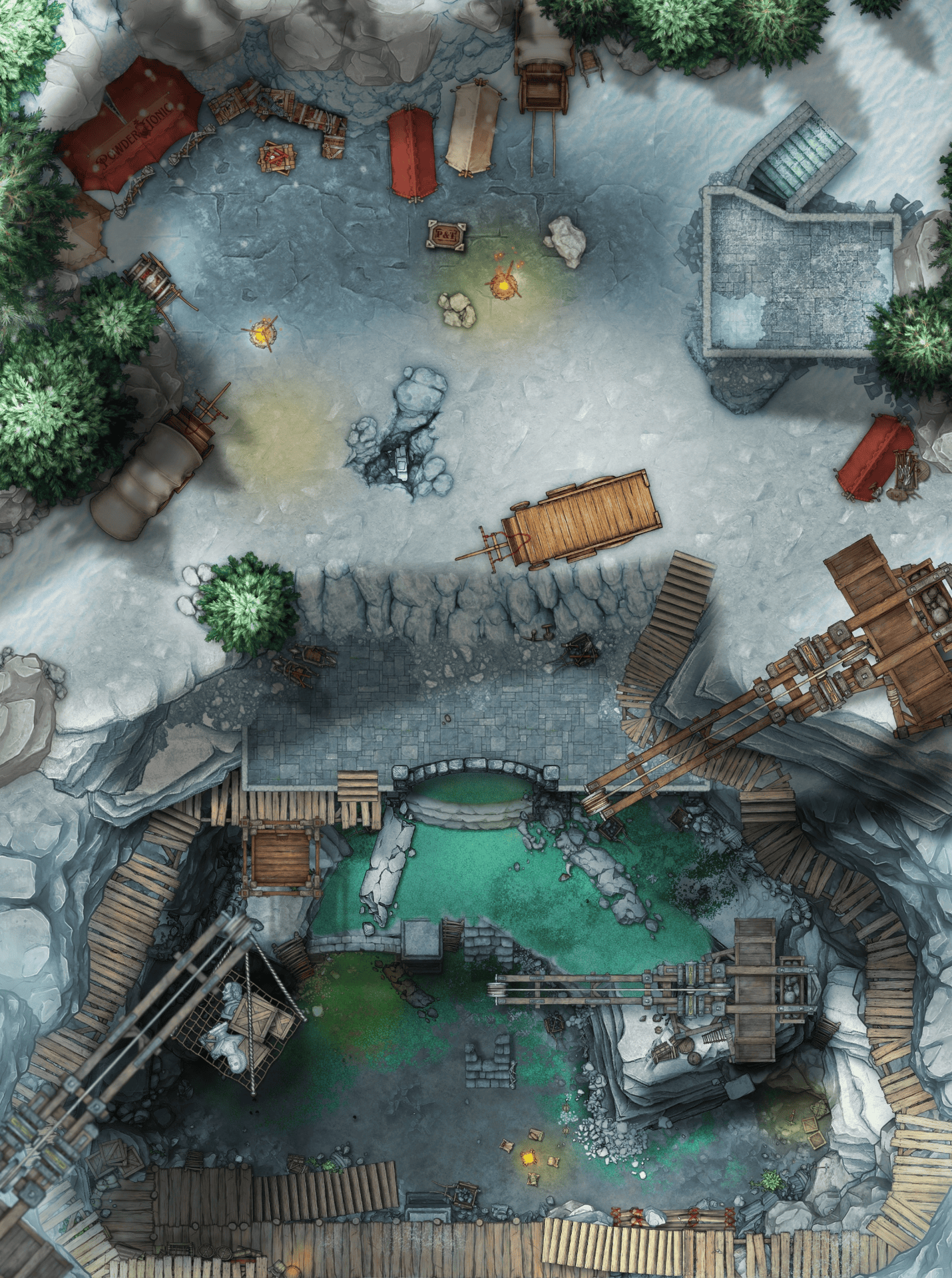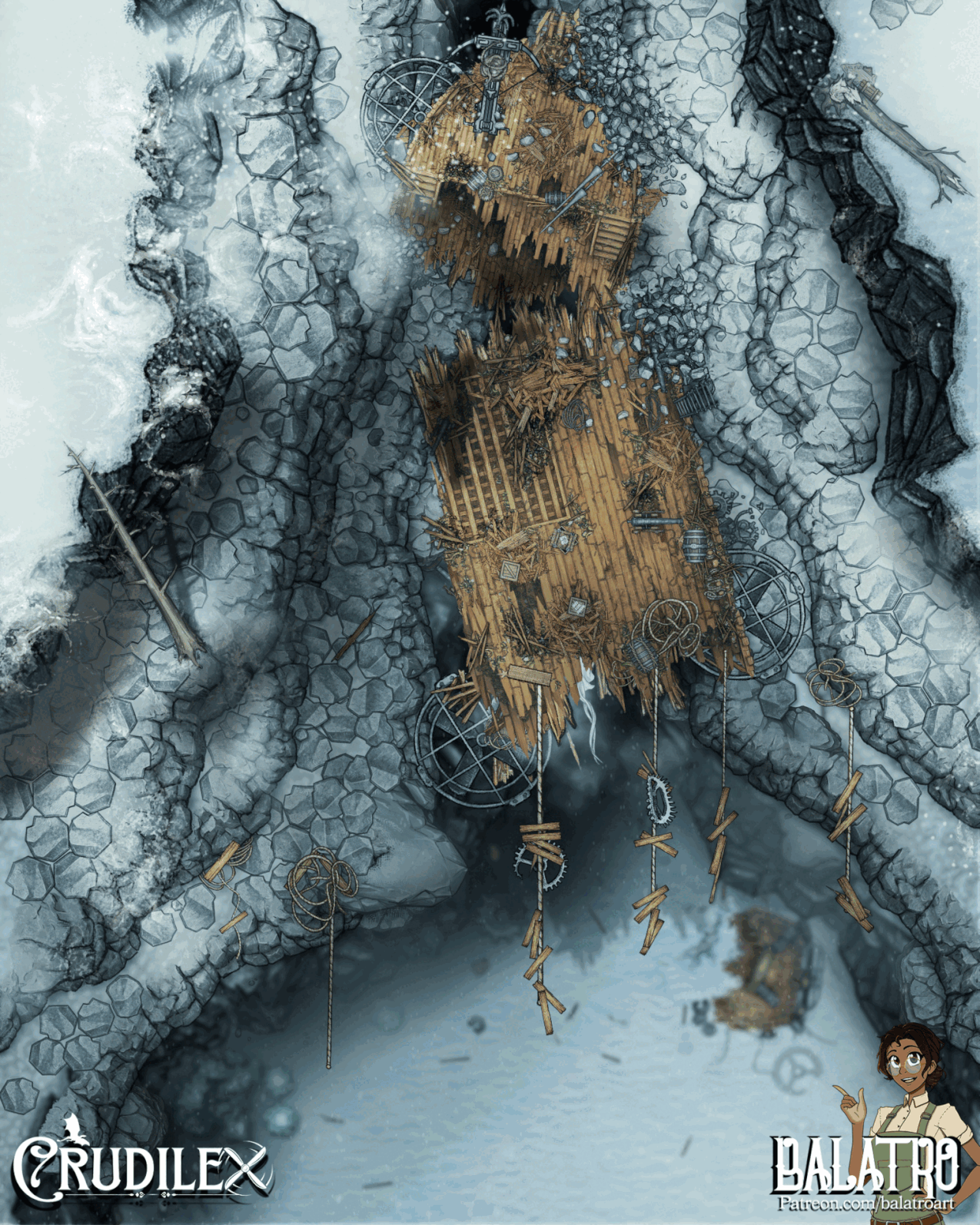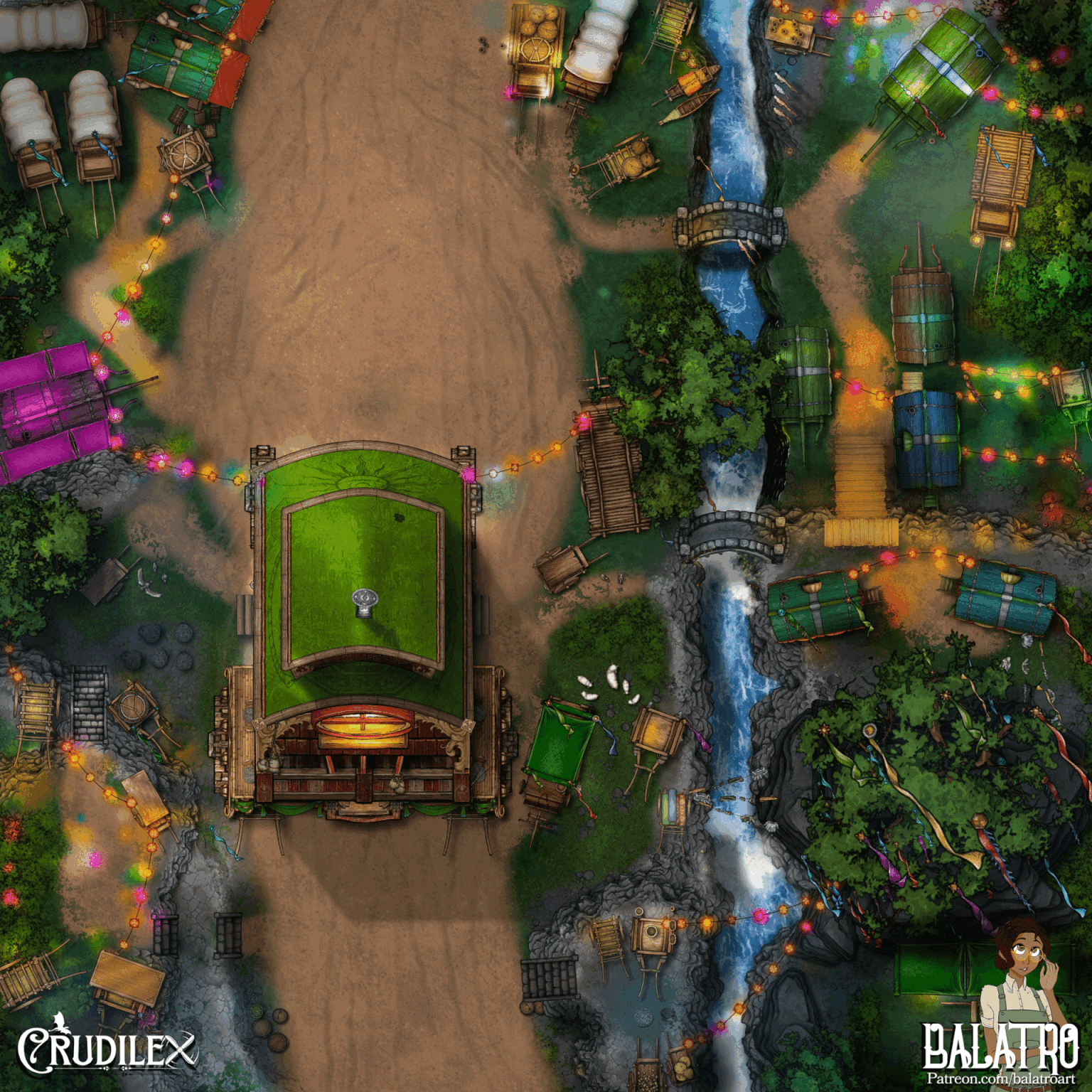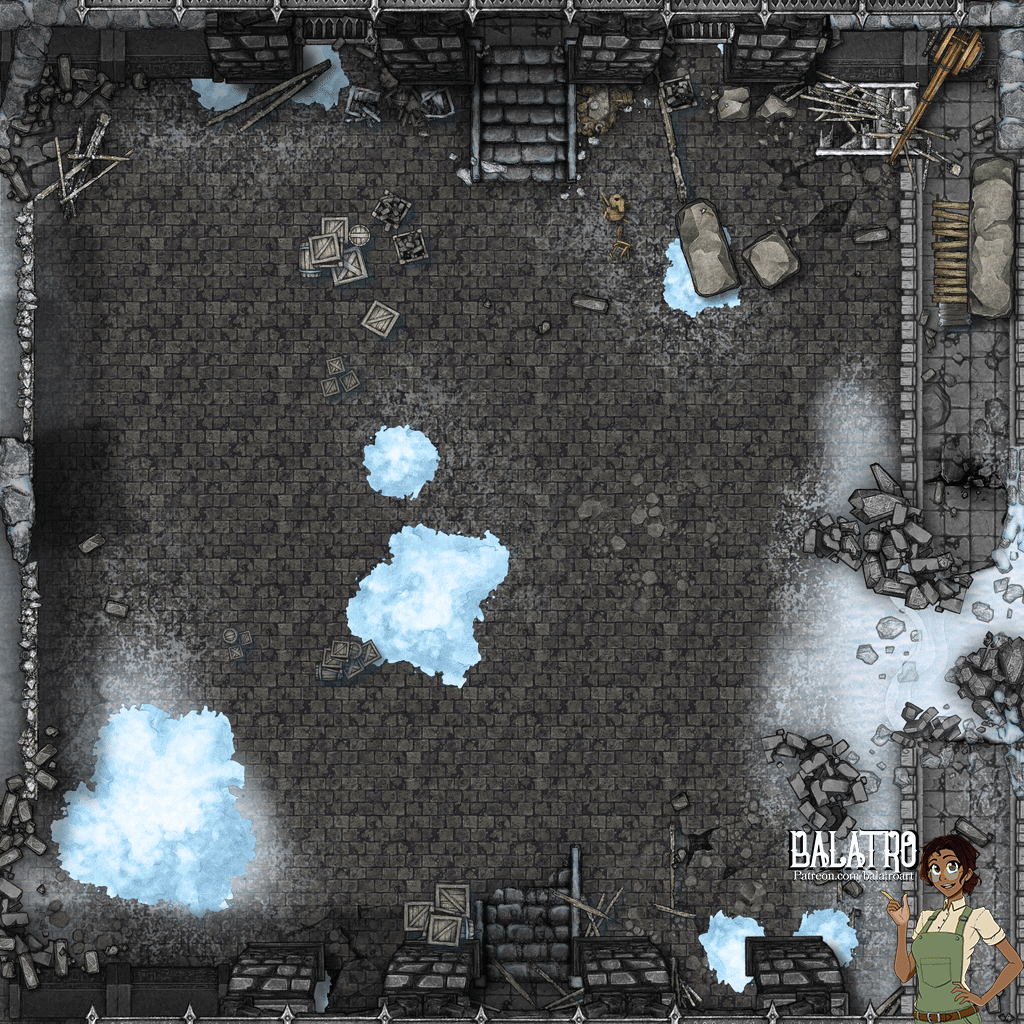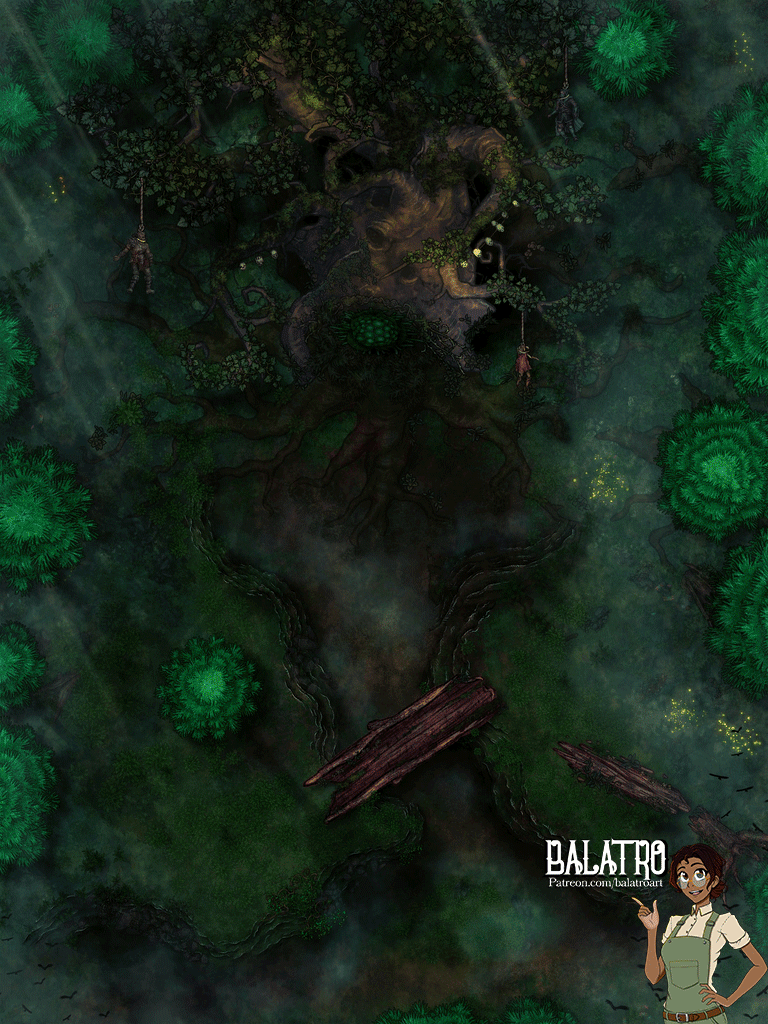
The Frozen Expance
Northlend Tunda
The Northlend Tundra is a vast, desolate expanse of rocky grassland, stretching endlessly beneath the towering shadow of the Fortunii Glaciers. A land marked by brutal cold, and famine, it is home to remnants of lost civilizations, forgotten tombs, and the priceless Sun Ivory buried deep in its lost catacombs. Once a thriving region with kingdoms like Pomark rising to prominence, the Tundra now teeters on the brink of collapse, its cities crumbling under the weight of starvation and disease.
Murderous Zank Raiders Hungry for flesh and power, opportunistic Tomb Dredgers seeking their riches in the gravemines, or the scholar-driven and the Relius Conclave, whose expeditions into the glaciers seek knowledge locked in time. Many claim this starving waste but it has no true master. Yet, even in its decline, it holds an undeniable beauty and an allure for treasure hunters, scholars, and fortune seekers alike, drawn by the promises of fortune and glory.
Battlemaps set in this location
Eoincrown
Eoincrown is a frozen city built atop an icy lake, with its skyline completely dominated by the looming Fortunii Glaciers. Located at the northernmost edge of the Plains of Avarice, it is the last city before the wilderness of algere beyond. Home to the renowned historian’s guild known as The Relius Conclave (often simply referred to as The Conclave), Eoincrown thrives under the rule of scholars and academics who collect and preserve historical artifacts. These collectors are a mix of treasure hunters and historians, determined to uncover and study the ancient secrets buried in the glaciers and lost in the annals of time.
The Conclave began as a modest group of scholarly antiquarians, but over time, their expertise and growing collection of priceless artifacts grew and gave them unprecedented power. As they amassed wealth and influence, their guildhall expanded into a sprawling city, with new markets, expeditions, and research stations sprouting around it. The Conclave now controls the city, with its scholars directing Research expeditions into the frozen glaciers, seeking knowledge of the ancient past.
While the Conclave’s mission is to preserve history, they are staunch enemies of the Tomb Dredging industry, a sector they view as nothing more than grave robbing. They pay handsomely for Sun Ivory artifacts, offering large rewards to anyone who can recover them, yet are equally ruthless in their efforts to thwart thieves and unscrupulous excavators. This rivalry has led to an ironic situation: the Conclave’s high demand for Sun Ivory artifacts has unintentionally fueled the ongoing Ivory Rush, with more and more adventurers and treasure hunters flocking to the region to unearth the rare and valuable material.
Village of Tukuruk
Tukuruk is a small, secluded village of ten or so snow-covered yurts, nestled within a round, bowl-shaped depression in the tundra. Hidden by a tall berm of packed snow, the village blends seamlessly into the endless, icy landscape. Only the thin pillar of smoke rising from its communal fire hints at its presence.
One of about thirty similar settlements of the Akowari people, Tukuruk holds a unique role in their interconnected society: it is the village of death, mourning, and burial. Beneath the snowy village lies a vast, stone-carved cavern filled with statues—each one a transmuted memorial to an Akowari soul.
Upon death, individuals are ritually transformed into stone
and placed within this sacred gallery. These statues, many centuries old, form an enduring record of the Akowari’s history, honoring both the deceased and those they hold in great esteem, such as allies and friends. Tukuruk is a place of deep reverence, where the Akowari come to grieve and reflect. It is considered by most of the Akowari people their most sacred site and the house of their ancestors' spirits where they may journey to when they need guidance.
Briar Hollow
Briar Hollow is the birthplace of the Arch-Dryad of Blight, the demigoddess of rot and renewal, named Briar. This seasonal personification rose to power during the Battle of Bitterthorn Ridge, when her sapling tree was inundated with an explosion of pure, unrestrained essence. In the aftermath, a towering world tree erupted from the earth where the dryad had stood, stretching skyward in an awe-inspiring display of primal power.
For the past twenty years, however, the once-mighty tree has been slowly decaying, resembling a titanic corpse. The mass of rotting leaves, collapsing bark, and sprawling roots at its base has given rise to a unique and unsettling ecosystem. Here, a kind of natural undeath takes root in a parade of shambling creatures—zombies, skeletons, and myconid colonies all thriving under Briar’s divine influence.
Fortunni Glacier Shelf
The Fortunni Glacier Shelf serves as a natural boundary between the Plains of Avarice and Algere, an imposing mountain of ice that dominates the entire northern horizon. From below, it appears as an endless, glittering wall—its sheer face stretching for miles like an unyielding rampart of nature. At its base, the glacier's surface is pocked with melted tunnels and icy veins, remnants of ancient water flows leaking out like lava tubes.
Within the glacier lies a network of caverns and passageways, spiraling deep into unknown depths. These frozen halls remain largely unexplored, a trove of history locked in time. Within the ice are artifacts from Crudilex’s ancient past, the remains of extinct creatures, and forgotten
relics. The Akowari people regard the Fortunni Glacier with reverence believing it to be a gateway to a frozen hell.
Myths about the Glacier tell of encounters with the Ninoten, mysterious fey spirits that embody abstract ideas, and monsters like the restless Draugr who appear as reflections in the ice without a source. Deep within the glacier’s icy bowels lie titanic, otherworldly bones—so immense they form natural bridges and stairways within the caverns. These colossal remains have drawn adventurers from across Crudilex, inspired by whispers that the glacier may lead to the Underdark, the Sunless Sea, or perhaps even the Void itself.
Affinity's Rest
The Affinity was an exceptional airship, and its crash was just as spectacular as the vessel itself. The ship shattered to splinters, hundreds of feet in the air, when it attempted a daring maneuver through a basalt canyon that proved just a bit too narrow. Now, the wreckage dangles precariously from ropes high above the frozen wastes, its treasure and secrets forever out of reach—but always tantalizing to those who brave the tundra in search of fortune.
Yet, someone—someday—will come along and make the climb up to the wreck. They’ll need to be prepared. The icy cliffs are treacherous, and there are rumors of something roosting in the wreckage, waiting for the next foolhardy adventurer to make the climb.
The Sisters Three
The Henge of the Sisters Three is a small, forbidden glade, shrouded in mystery and surrounded by towering stone blocks arranged in a gigantic circular henge. The stones, weathered and ancient, whistle in the wind of the plains, while the muddy undergrowth is thick with tundra grass, periodically interrupted by dribbling hot spring waters. It is within this sacred and unsettling place that the witch oracles—the Sisters Three—once guided those few who call the Northlend Tundra their home. These enigmatic sisters were said to be hideous undead monsters for most of the year, with the exception of one month at the heart of autumn. It was during this time that pilgrims from across the region journeyed to the henge, seeking the witches’ omens and instructions for the coming year.
However, in recent decades, the Sisters have not appeared. Since the dissolution of the Lucan-Oku alliance, the legendary witches have remained absent—undead or otherwise. There are many who now believe that the Sisters never existed at all, that the "leaders" of the tundra were nothing more than a myth—an enduring legend carefully maintained by those who would prevent the land from being stripped of the graves and Sun Ivory that have made so many their fortunes.
Bojonin Gulch
A long, wide, shallow river with rocky banks cuts through the northern side of the tundra, carving a path between the mountains and the Fortunni Glacier Shelf. This bleak and desolate stretch of land offers little more than bitter cold and relentless winds, making it a harsh route for travelers headed east to the Loom over the mountains.
Despite its inhospitable nature, the Gulch is renowned for one event—its infamous role in the final showdown of the horseman outlaw Santana Balthazar-Thom. The outlaw, whose reign of terror had plagued the tundra for years, met his end here in a duel at high noon. Standing in the rocky shallow of the icy river, Santana faced off against his former protege, Archer Falstead, in a legendary contest of quick draw. Santana was struck down, his life extinguished in a single, fateful shot. His reign of terror ended in the shallow, icy waters of the Bojonin Gulch, forever immortalized in the folk tales and songs of the tundra's people.
Nalgorac
The remains of Hellkeep Mountain, once a mighty fortress, now lie in ruin. It was here that the great Iverloft ripped free from its foundations and took flight, leaving behind a gaping pit that now serves as a dark maw to the Hive. The cold, grey mountain is riddled with cracks and tunnels, where the Infected Dolanth—horrible, twisted creatures—crawl within, their presence poisoning the land.
Shattered fragments of the mountain’s peak still hover around the cavern's edge, floating like tiny island motes, caught in the grip of strange, otherworldly magics. The once-proud summit now stands like a giant broken grave.
In the shadow of this desolation, the mountain has come to be known as Nalgorac—a name given by the fallen elven caravans who sought refuge here. After the destruction of their homeland in Felshire, these nomadic tribes of elves immigrated north, fleeing the ravages of their curse and persecution. Feared and ostracized as dangerous outsiders, they found solace in the isolation of the tundra surrounding the mountain, building communities at its foot. There, in the shadow of the ruined Hellkeep, they forged a new life in relative peace, though their presence remains a constant source of tension and unease for the few neighboring inhabitants of the tundra
The Loom
Nestled in a magical valley high in the mountains on the outskirts of the Plains of Avarice lies The Loom, an arcane sanctuary protected by a vigilant spirit named Hemo. The valley derives its name from its nature: a confluence of all the ley lines of Crudilex, crossing and intertwining in a single location. These braided lines form an invisible tapestry of untamed magic, a phenomenon often called the Golden Weave.
The Loom exists as a snapshot locked in time, untouched by the calamities of the Day of Dawn. Unlike the fractured and unstable ley lines beyond its borders, the flow of magical essence here remains steady and abundant, sustained by Hemo.
Within the Loom, a rare magical practice known as Threading has flourished. Practitioners conjure and control vibrant red threads imbued with potent magic. These threads can be manipulated to extraordinary effect: weaving spells, binding objects, or even animating unique porcelain-like beings called Thread-Borne. These humanoid constructs, endowed with sentience and purpose, serve as guardians of the Loom.
The valley itself teems with unique life found nowhere else in Crudilex. Its vibrant flora and fauna are shaped by the steady pulses of magic. The Loom is more than just a sanctuary—it is the treasure of the tundra.
Sanroko's End
The western tundra of Crudilex paints a solemn picture of the harsh realities of life across the frozen north. At its heart lies Sanroko’s End, a staggering 2,000-foot pit that plunges into an abyssal darkness. This chasm marks the site where the greatest engineering marvel of its time—the Sanroko Crossnational—met its catastrophic demise.
The Sanroko was once the greatest engineering marvel ever constructed in Crudilex: a 100-floor, thousand-foot-long iron fortress on tracks that spanned the whole of the world. Brought into being by the Frea, Exalt church leader of Dioten, god of machines, it was meant to be a final omen signaling the dawn of
humanity’s domination over nature. However, the construction of the train was plagued by attacks and sabotage from the agents of the King of Monsters, Hazradorf, a quasi-deity who fought on behalf of nature to ensure the train would never be completed.
The conflict came to a head during the Battle of Bitterthron Ridge, where a titanic explosion detonated at the heart of the train. The resulting blast crumbled the crust of the land, creating a miles-long sinkhole that swallowed the train, sending it into the sunless sea below, lost in darkness. Once the world’s symbol of progress and unity, the Sanroko was obliterated.
Today, Sanroko’s End is just one more wound in the war between humanity and the wild forces of Crudilex. The site has been memorialized by the construction of a great bridge that reconnects the shattered tracks, completing the railway that links the inner countries of the Plains of Avarice. The bridge stands as a tribute to the countless lives lost in the explosion, their names etched into its iron supports, forever carried by the cold winds of the tundra.
The Sanroko-II Crossnational Express
The Sanroko once served a secret purpose—to fulfill a divine omen and invoke the wrath of the god of Law and Justice upon all. This terrible mission failed, thanks to the intervention of a few brave adventurers, and the original train was destroyed.
Today, the train has been reconstructed in Grand Nostridan, stripped of its divine connection to Dioten. It now serves no further divine purpose. Instead, the Sanroko-II fulfills the promise once made to the people of Crudilex: to unite the nations of the Plains of Avarice and provide safe passage across the otherwise extremely dangerous, Iv-warped infested plains.
Now, travelers from all corners of the world can move within this rolling fortress, protected from the threats of the world in complete peace. Like its predecessor, the Sanroko-II is so immense that there are those who live exclusively onboard the fortress train.
As the scope of the world shrinks, the Plains of Avarice grow more connected, allowing the union of millions who would have otherwise never come face to face.
With stops in Roa, Grand Nostridan, Ravenfall, Dawnfire, New Collora, Hark, Crosshaven, The Northlend Tundra, and finally Okugai, the Sanroko-II continues to expand, becoming a defining feature of the face of Crudilex.
The Lightning Tree
A gnarled wildroot tree stands at the heart of the Tundra, its rootline brimming with extremely concentrated magic. This immense energy causes the tree to regularly erupt with sparks of light and electricity that crackle through the night sky of Northlend. The Lightning Tree has become a clear sign to those who call the tundra home, an indicator that strange or magical events are likely to occur, as these occurrences nearly always coincide with the tree’s glowing.
Some believe the tree was planted there by the Sisters Three, the fabled protectors of the tundra who have long since vanished. It is said to be their parting gift to their loyalists, a magical beacon meant to alert them of changes in the land or the coming of powerful arcane forces.
Pomark
Pomark is a young kingdom brought to life by the arrival of the Sanroko II, quickly establishing itself in the Tundra as a hotspot for treasure seekers and Tomb Dredgers. These ambitious adventurers converged on the newly founded Gravemines, seeking the tombs of ancient peoples from two thousand years ago and the Sun Ivory they were often buried with.
However, in the last decade, Pomark has been ravaged by famine and disease. The city now stands practically in ruins, clinging to life as its once-thriving population has dwindled. The majority of its citizens have either abandoned the city or perished in the cold, leaving behind a bitter few who remain, holding onto the fragile hope of fortune in the Gravemines. Pomark is nearly a ghost town. Its people now live in constant fear of the Zank Raiders, a ruthless band of cannibals who prey on the desperate survivors.
Zank Raiderlands
Once the starving citizens of Pomark, these unfortunate souls turned to cannibalism in a desperate attempt to survive. In doing so, they unlocked disturbing sangromantic powers— blood-magic that grew stronger with each sentient being consumed. The more they ate, the more savage and monstrous they became.
Today, these twisted survivors have banded together in a cult-like society, now living on the fringes of Pomark in the barren, desolate region known as the Zank Raiderlands. This land mirrors its occupants: starved, cold, and devoid of life, besides for the raiders themselves. The region is a wasteland of jagged rocks and frozen ground, where little grows, and nothing but death lingers.
The Zank Raiders lurk in the shadows of the tundra, waiting for anyone foolish enough to wander into their territory. Should the land remain quiet for too long, they will turn their attention to Pomark and the Gravemines, striking northward in a violent raid. They capture hundreds, transforming those they can into raiders like themselves—imbuing them with their hunger for flesh and the savage power of their twisted magic— devouring the rest.
The Gravemines of Pomark
The Gravemines of Pomark are a booming excavation site, born out of the aftermath of the Battle of Bitterthorne Ridge and the destruction of the Sanroko. When the titanic explosion created a massive sinkhole, it opened a cavernous pit, revealing long-forgotten catacombs from a lost civilization—an ancient people from the Age of Magic, over two thousand years ago.
Among the remains of these mysterious peoples lie treasures of unimaginable value, including weapons crafted from a substance known as Sun Ivory—a material far superior to anything known in the modern world and worth a fortune. The discovery of Sun Ivory ignited a frenzied rush of adventurers, miners, and fortune hunters, all eager to extract these rare and potent relics. What began as a small dig has now grown into a feverish race to unearth the catacombs and mine their contents.
The practice of treating these ancient graves like mineral veins to be stripped and sold earned the participants the name "tomb dredgers." Originally an insult, the term has since become as common as "blacksmith" or "lamplighter" as the coin piles higher. The demand for Sun Ivory has surpassed that of any other resource in Crudilex. The Gravemines, the largest of the excavation sites, are now ruthlessly strip-mined in search of more tombs and artifacts, their cold and pragmatic efficiency leaving deep scars across the tundra.
Cenotaph
The name Cenotaph is an ironic one, as this town was originally established as an outpost for local Tomb Dredgers to trade Sun Ivory. What began as a refugee camp for those fleeing the chaos of Pomark's famine has grown into a thriving settlement. As Pomark's slow death continued, many who were still willing to risk an encounter with the cannibalistic Zank Raiders have settled in Cenotaph, hoping to continue their work in the Gravemines.
Today, Cenotaph is a boomtown, attracting anyone seeking fortune or refuge. Despite lacking a formal station, the Sanroko-II still makes a stop here, pulling up outside the town to drop off Tomb Dredgers and take aboard any willing refugees before continuing its journey past the ruins of Pomark. The train’s presence is a lifeline for the town, offering a rare connection to the outside world beyond the Tundra.



